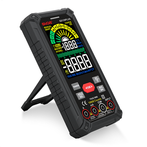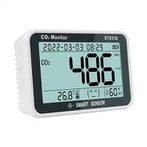Explanation of external interference of switching power supply
External interference in switch mode power supplies can exist in a "common mode" or "differential mode" manner. The type of interference can vary from short-term peak interference to complete power loss. This also includes voltage changes, frequency changes, waveform distortion, sustained noise or clutter, and transients.
The main factors that can cause damage or affect the operation of equipment through power transmission are electrical fast transient pulse groups and surge shock waves. As long as the power supply equipment itself does not produce phenomena such as vibration stoppage and output voltage drop, interference such as electrostatic discharge will not cause any impact on electrical equipment caused by the power supply.
Power conversion circuit: The power conversion circuit is the core of a switching regulator power supply, which has a wide bandwidth and rich harmonics. The main components that generate this pulse interference are:
1) There is distributed capacitance between the switch tube and its heat sink and the leads inside the casing and power supply. When a large pulse current (generally rectangular wave) flows through the switch tube, the waveform contains many high-frequency components; At the same time, the device parameters used in switching power supplies, such as the storage time of the switching power transistor, the high current of the output stage, and the reverse recovery time of the switching rectifier diode, can cause instantaneous short circuits in the circuit, resulting in a large short-circuit current. In addition, the load of the switching transistor is a high-frequency transformer or energy storage inductor. At the moment when the switching transistor is turned on, there is a large surge current in the primary of the transformer, causing peak noise.
2) The transformer in high-frequency transformer switching power supply is used for isolation and transformation, but due to leakage inductance, it will produce electromagnetic induction noise; At the same time, under high-frequency conditions, the distributed capacitance between the layers of the transformer will transfer the high-order harmonic noise on the primary side to the secondary side, while the distributed capacitance of the transformer to the shell forms another high-frequency path, making it easier for the electromagnetic field generated around the transformer to couple and form noise on other leads.
3) When the rectifier diode on the secondary side is used for high-frequency rectification, due to the factor of reverse recovery time, the charge accumulated in the forward current cannot be immediately eliminated when a reverse voltage is applied (due to the presence of carriers and the flow of current). Once the slope of the reverse current recovery is too large, the inductance flowing through the coil will generate a spike voltage, which will cause strong high-frequency interference under the influence of transformer leakage inductance and other distributed parameters, with a frequency of up to tens of MHz.
4) Capacitors, inductors, and wire switching power supplies, due to operating at higher frequencies, can cause changes in the characteristics of low-frequency components, resulting in noise.






